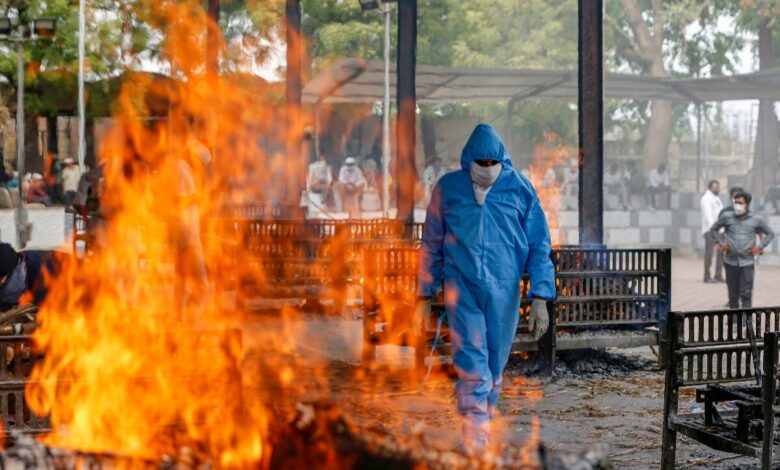We never thought we would say this but we miss 2020: Will 2021 be worse than 2020 for the Indian economy?

The last fiscal year (2020-21) began when the entire country was subject to one of the most stringent (and, to a large extent, unexpected) lockdowns in the world. But then few felt April 2021 would be worse than April 2020 in the case of Covid. In reality, initial forecasts of the government last year indicated that no new Covid cases will take place after May 16, 2020. To our astonishment, India is currently facing 1.75 times more the number of cases per day, compared with the previous highest record which was in September 2020. Even worse than that is the fact that after a year’s understanding of the critical need to follow the behaviour of Covid and the various vaccinations that are available, we are still not prepared for this second wave of the coronavirus infection. The government’s mismanagement of the vaccination processes—with several areas declaring shortages—as well as the deliberate ignorance of upholding public social distance standards leaves the present peak of nobody’s guilt.
What does that mean for the restoration of the Indian economy?
Without the latest rise, a “V-shape” recovery was projected to occur in the first half of the current financial year – April to September. But this V-shaped regeneration in Covid cases is very different, of course.

Why is this so?
Since in the first half of the financial year the recovery of economic activity would be crucial. That means the lower base impact would make the GDP growth rate look very good for the first half of the current fiscal year, as Gross Domestic Product (GDP) contracted by up to 15 per cent over the first half of the last financial year. However, with the new dynamics in place, we don’t think India would witness the expected increase in absolute GDP or its growth rate. Crisil says that GDP will be just around 2 per cent higher than March 2020 by the end of 2021-22. More specifically, absolute GDP is around 10 per cent below its pre-pandemic level.
The consistent difference between the pre-Covid and current trends represents a continued loss of 11 per cent of GDP from 2021-22 to 2012-25. In addition, not only the average income levels but also the distribution is threatened by the recent boom. Last year, wage and wealth gaps have risen enormously. Though millions are predicted to fall under the poverty line, the fortunes of the largest corporations and the wealthiest Indians have sky rocketed. The new Forbes yearly list of millionaires also reported that India’s richest man, Mukesh Ambani took over Jack Ma to become Asia’s wealthiest man. He also grabbed the title of the third-largest billionaire in the world for some time. In reality, over the last year alone, the 3 wealthiest Indians added over $100 billion (approximately Rs 7.4 billion) to their wealth. The point is that India still has large disparities, and Covid’s destruction is just widening them.
What is the government doing about it?
Normally, at this stage, one might inquire about the government’s efforts to relieve economic stress. The first lockdown had a major impact on migrant jobs. India’s second wave is expected to be longer and more violent than the first, with a single-day jump in COVID-19 cases breaking records last week. Many states have now declared partial lockdowns, with more expected to follow. Fears of a total lockdown have also prompted some migrant workers to return to their home villages from manufacturing centres and suburbs. In this background, a new report conducted by ICRIER in concurrence with the Inferential Survey Statistics and Research Foundation (ISSRF) discovered that migrant workers, who bore the brunt of the pandemic’s effects, had yet to completely recover from their experiences over the past year. The research, which was led by Shyma Jose, Ashok Gulati, and B.B. Singh, looked at the effect of the pandemic on migrant workers through a survey of 2,917 migrants in six states: Bihar, Chhattisgarh, Jharkhand, Odisha, Uttar Pradesh, and West Bengal.
Governments do not seem to have learned from last year’s lockdown, which interrupted supply chains, resulted in a significant drop in production growth, increased unemployment, decreased earnings and savings, and jeopardized the food and livelihood security of millions of workers across the nation. Migrant jobs were the hardest hit, they claimed. The researchers discovered that the abrupt imposition of the lockdown had a significant effect on the migrants’ earnings and investments as they returned to their villages. More than a third of the reverse migrants (38.6 per cent) said they couldn’t find jobs when they returned to their home country. Migrants’ household incomes dropped by as much as 85 per cent during the first wave due to a lack of suitable job opportunities in their homelands. With the recovery of economic activity after the first lockdown, we discovered that by February 2021, 63.5 per cent of migrants from these six states had returned to their destination areas, while 36.5 per cent stayed in their home states. Bihar had the highest rate of emigration to the destination after the lockdown (92.5 per cent), followed by Uttar Pradesh and Odisha (65 per cent each). Migrants from West Bengal (40.3 per cent) and Jharkhand (31.2 per cent), on the other hand, were reluctant to return after the lockdown. Despite the fact that migrant households’ income has risen after their re-migration to their destination countries, their income is still down 7.7 per cent from pre-lockdown levels. Furthermore, they claim that another lockdown — or the threat of one — could derail the recovery process. If the migrants return to their home place, their household income could plummet by more than 80 per cent, similar to what happened after the first lockdown.






